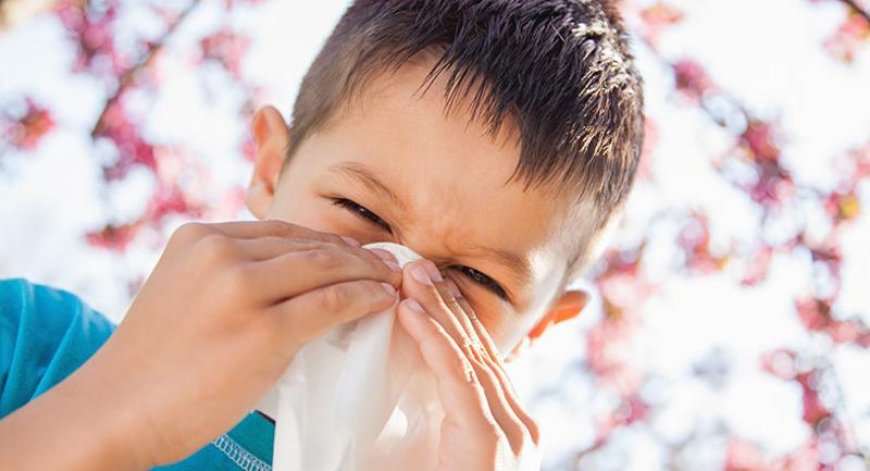Allergic Rhinitis Treatment Market is Estimated to Witness High Growth Owing to Advancements in Allergen Immunotherapy
The Global allergic rhinitis treatment market is estimated to be valued at US$ 14.28 Billion in 2024 and is expected to exhibit a CAGR of 4.8% over the forecast period 2024.

The allergic rhinitis treatment market has witnessed substantial growth in recent years. Allergic rhinitis, commonly known as hay fever, is caused by an allergic reaction to certain allergens like dust mites, pollen, mold, or animal dander. It is characterized by symptoms like sneezing, itchy or runny nose, nasal congestion, and itchy throat and eyes. The rising environmental pollution levels and growing urbanization have contributed to the increasing prevalence of allergic rhinitis across the globe.
Currently, there are various treatment options available for allergic rhinitis including antihistamines, decongestants, intranasal corticosteroids, leukotriene receptor antagonists, and allergen immunotherapy. Among these, intranasal corticosteroids are considered the most effective treatment as they help reduce inflammation of the nasal lining. Increased awareness about the disease and availability of effective treatment options are fueling market growth.
The Global allergic rhinitis treatment market is estimated to be valued at US$ 14.28 Billion in 2024 and is expected to exhibit a CAGR of 4.8% over the forecast period 2024.
Key Takeaways
Key players operating in the Allergic Rhinitis Treatment Companies are Merck & Co, GlaxoSmithKline PLC, Sanofi, Johnson & Johnson, and ALK-Abelló.
The market offers significant growth opportunities owing to the rising research and development of advanced allergen immunotherapy vaccines and nasal sprays. Emerging economies with high disease prevalence also present lucrative opportunities.
Technological advancements like sublingual and subcutaneous immunotherapy are gaining popularity as they are safer and more effective alternatives to conventional allergy shots. Development of customized therapies based on individual patient's allergen profiles can drive further innovation.
Market Drivers
Growing worldwide prevalence of allergic rhinitis due to increasing environmental pollution and changing lifestyle factors is a major Allergic Rhinitis Treatment Market Trend driver. According to studies, over 500 million people suffer from allergic rhinitis globally.
Increased awareness about the chronic nature of the disease and availability of various treatment options are also prompting more patients to seek medication. This is fueling demand for both prescription and over-the-counter drugs.
The upcoming patent expiries of blockbuster drugs provide an opportunity for generic manufacturers to capture significant market share with their affordable alternatives. This is expected to make effective treatment more accessible.
Allergic Rhinitis Treatment Market
Current challenges in the industry:
Allergic rhinitis continues to pose major challenges for both patients and physicians. Symptoms of allergic rhinitis can significantly impair quality of life and daily activities. Finding effective long-term treatment options without major side effects remains a challenge. Both over-the-counter and prescription medications may cause drowsiness and dryness of the mouth. Development of more targeted therapies with fewer side effects is an ongoing area of research and development in this market.
SWOT Analysis
Strength: Existing drugs in the market have established efficacy and safety profiles. Many generic options are also available at lower costs.
Weakness: Symptoms often recur and patients may need lifelong treatment. 100% relief from symptoms can be difficult to achieve long-term.
Opportunity: Scope for development of novel drugs formulations such as sublingual tablets and nasal sprays with better ease of use. Growing pollution levels indicate a vast underserved patient population.
Threats: Intense competition from existing generic players and low barriers to entry pose pricing pressures. Side effects and long-term safety concerns of newer therapies.
Geographical regions of concentration: North America currently accounts for the largest share of the global allergic rhinitis treatment market, mainly due to high healthcare spending and established players in the region. Asia Pacific is also among the major markets and is expected to witness high growth over the forecast period supported by rising pollution levels and growing medical tourism in the region.
Fastest growing region: The Asia Pacific region is poised to register the fastest growth in the global allergic rhinitis treatment market during the forecast period. Factors such as rising air pollution levels, growing medical tourism, and increasing patient awareness are driving the market growth in Asia Pacific. Rapid economic development and improving access to healthcare are further supporting market expansion across developing nations in the region.
Get more insights on Allergic Rhinitis Treatment Market
Unlock More Insights—Explore the Report in the Language You Prefer
About Author:
Ravina Pandya, Content Writer, has a strong foothold in the market research industry. She specializes in writing well-researched articles from different industries, including food and beverages, information and technology, healthcare, chemical and materials, etc.












